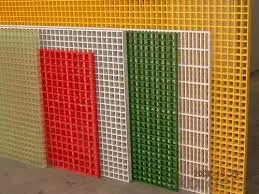
-
 Afrikaans
Afrikaans -
 Albanian
Albanian -
 Amharic
Amharic -
 Arabic
Arabic -
 Armenian
Armenian -
 Azerbaijani
Azerbaijani -
 Basque
Basque -
 Belarusian
Belarusian -
 Bengali
Bengali -
 Bosnian
Bosnian -
 Bulgarian
Bulgarian -
 Catalan
Catalan -
 Cebuano
Cebuano -
 China
China -
 China (Taiwan)
China (Taiwan) -
 Corsican
Corsican -
 Croatian
Croatian -
 Czech
Czech -
 Danish
Danish -
 Dutch
Dutch -
 English
English -
 Esperanto
Esperanto -
 Estonian
Estonian -
 Finnish
Finnish -
 French
French -
 Frisian
Frisian -
 Galician
Galician -
 Georgian
Georgian -
 German
German -
 Greek
Greek -
 Gujarati
Gujarati -
 Haitian Creole
Haitian Creole -
 hausa
hausa -
 hawaiian
hawaiian -
 Hebrew
Hebrew -
 Hindi
Hindi -
 Miao
Miao -
 Hungarian
Hungarian -
 Icelandic
Icelandic -
 igbo
igbo -
 Indonesian
Indonesian -
 irish
irish -
 Italian
Italian -
 Japanese
Japanese -
 Javanese
Javanese -
 Kannada
Kannada -
 kazakh
kazakh -
 Khmer
Khmer -
 Rwandese
Rwandese -
 Korean
Korean -
 Kurdish
Kurdish -
 Kyrgyz
Kyrgyz -
 Lao
Lao -
 Latin
Latin -
 Latvian
Latvian -
 Lithuanian
Lithuanian -
 Luxembourgish
Luxembourgish -
 Macedonian
Macedonian -
 Malgashi
Malgashi -
 Malay
Malay -
 Malayalam
Malayalam -
 Maltese
Maltese -
 Maori
Maori -
 Marathi
Marathi -
 Mongolian
Mongolian -
 Myanmar
Myanmar -
 Nepali
Nepali -
 Norwegian
Norwegian -
 Norwegian
Norwegian -
 Occitan
Occitan -
 Pashto
Pashto -
 Persian
Persian -
 Polish
Polish -
 Portuguese
Portuguese -
 Punjabi
Punjabi -
 Romanian
Romanian -
 Russian
Russian -
 Samoan
Samoan -
 Scottish Gaelic
Scottish Gaelic -
 Serbian
Serbian -
 Sesotho
Sesotho -
 Shona
Shona -
 Sindhi
Sindhi -
 Sinhala
Sinhala -
 Slovak
Slovak -
 Slovenian
Slovenian -
 Somali
Somali -
 Spanish
Spanish -
 Sundanese
Sundanese -
 Swahili
Swahili -
 Swedish
Swedish -
 Tagalog
Tagalog -
 Tajik
Tajik -
 Tamil
Tamil -
 Tatar
Tatar -
 Telugu
Telugu -
 Thai
Thai -
 Turkish
Turkish -
 Turkmen
Turkmen -
 Ukrainian
Ukrainian -
 Urdu
Urdu -
 Uighur
Uighur -
 Uzbek
Uzbek -
 Vietnamese
Vietnamese -
 Welsh
Welsh -
 Bantu
Bantu -
 Yiddish
Yiddish -
 Yoruba
Yoruba -
 Zulu
Zulu
fiberglass launder
The Advantages of Fiberglass Launders in Industrial Applications
In the realm of industrial processes, the importance of effective water management and wastewater treatment cannot be overstated. Among the various components employed in these systems, fiberglass launders have gained prominence due to their numerous advantages. These integral structures, often found in treatment plants and mining operations, play a crucial role in the distribution and collection of liquids, particularly during the sedimentation and filtration processes.
Fiberglass, a composite material made from glass fibers and resin, offers exceptional durability and corrosion resistance. One of the primary benefits of fiberglass launders is their ability to withstand harsh chemical environments. Unlike traditional materials such as concrete or metal, fiberglass does not corrode or degrade when exposed to a variety of chemicals, making it an ideal choice for applications that involve aggressive wastewater.
Moreover, the lightweight nature of fiberglass facilitates easier transportation and installation. This aspect is particularly advantageous in remote or challenging locations where heavy equipment might not be accessible. Fiberglass launders can be prefabricated in sections and transported to the site, reducing on-site labor costs and installation time. The ease of handling also minimizes the risk of worker injury during installation.
fiberglass launder

Another key advantage of fiberglass launders is their design flexibility. Fiberglass can be molded into various shapes and sizes, allowing engineers to customize launders to meet specific operational requirements. This adaptability ensures optimal fluid flow and can significantly enhance the efficiency of sedimentation processes. Additionally, the smooth interior surfaces of fiberglass launders reduce friction, leading to improved hydraulic performance and reduced energy consumption.
Maintenance is another critical consideration in industrial applications, and fiberglass launders excel in this regard. Their non-porous surfaces minimize the accumulation of sludge and other debris, reducing the frequency and cost of maintenance activities. Regular cleaning becomes more manageable, resulting in a longer lifespan for the launders and less downtime for operations.
In conclusion, fiberglass launders represent a valuable innovation in the field of water management and wastewater treatment. Their durability, lightweight nature, design flexibility, and low maintenance requirements make them an optimal choice for industries that prioritize efficiency and cost-effectiveness. As industries continue to seek sustainable solutions, the adoption of fiberglass launders is likely to grow, further cementing their significance in modern industrial practices.
Latest news
-
Exploring the Benefits of Top Hammer Drifter Rods for Enhanced Drilling PerformanceNewsJun.10,2025
-
High-Precision Fiberglass Winding Machine for GRP/FRP Pipe Production – Reliable & Efficient SolutionsNewsJun.10,2025
-
FRP Pipes & Fittings for Shipbuilding - Corrosion-Resistant & LightweightNewsJun.09,2025
-
Premium FRP Flooring Solutions Durable & Slip-ResistantNewsJun.09,2025
-
Premium Fiberglass Rectangular Tanks Durable & Lightweight SolutionNewsJun.09,2025
-
Tapered Drill String Design Guide Durable Performance & UsesNewsJun.09,2025









